When the De Luca clan settled in the Rural Municipality of Macdonald several years ago, it had one next-door neighbour — coyotes.
The entrepreneurial family had decided a field just outside Winnipeg’s city limits — close to the bedroom community of Oak Bluff — would be the home for its new 42,000-sq.-ft. market and warehouse, De Luca’s South Landing.
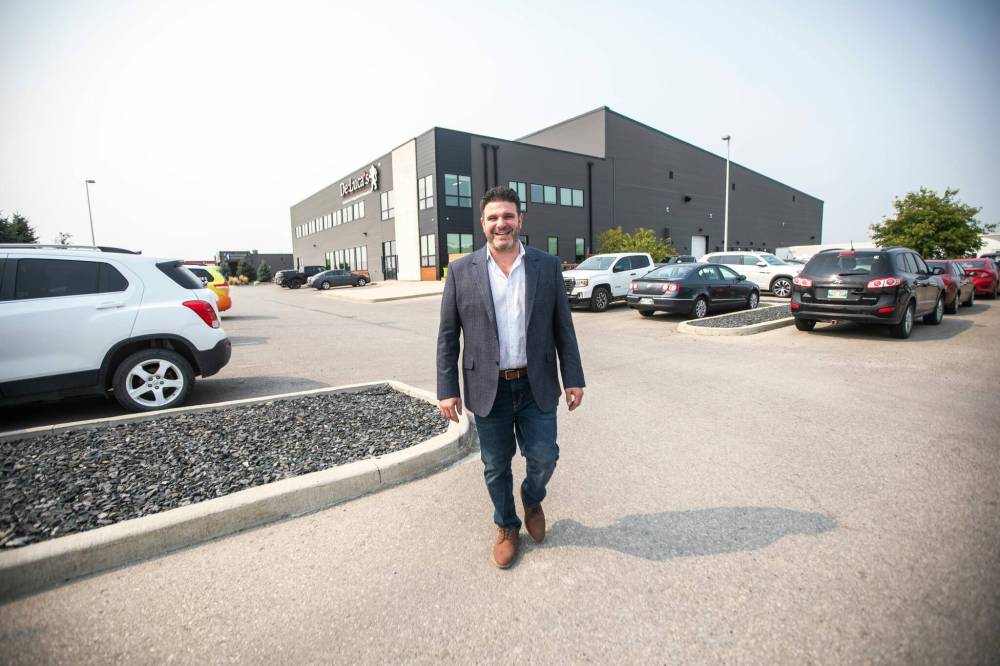
MIKAELA MACKENZIE / FREE PRESS
Marco De Luca, co-owner of De Luca’s, at their building in the Rural Municipality of Macdonald.
However, Marco De Luca remained hesitant: would people travel the extra distance?
Sure, there were some industrial enterprises on the other side of McGillivray Boulevard — Brandt Tractor has been there decades — and there were other businesses closer to the city, but most of the area was agricultural.
Before the shovels hit the ground, the family had a priest bless the site of their future home.
“We were literally on the cement portion … looking at this farmer’s field that was depressed and had water puddles everywhere,” De Luca said. “It took some vision.”
That was eight years ago. Today, De Luca can’t even keep track of his neighbours.
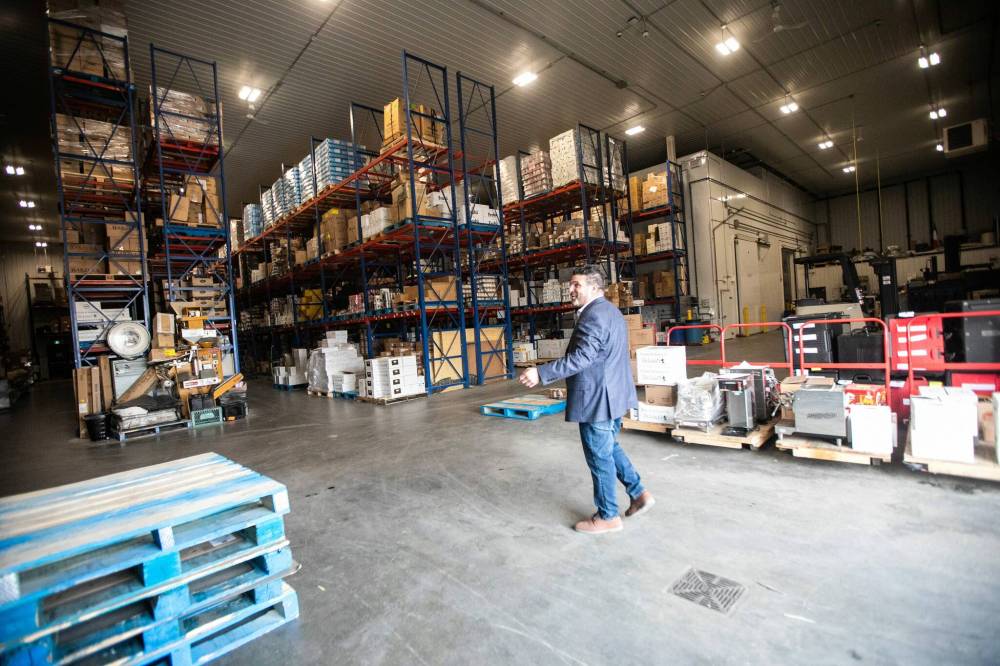
MIKAELA MACKENZIE / FREE PRESS
Marco De Luca inside De Luca’s South Landing, a 42,000-sq.-ft. market and warehouse that had no neighbours when first built.
Oak Bluff, situated in the northeast corner of the RM of Macdonald, along with other municipalities on Winnipeg’s western border, is booming in industrial and residential growth. Rosser, home of CentrePort, a massive trimodal inland port, and Headingley have also seen similar growth.
In 2016, the RM of Macdonald had an assessment (or estimated market value) of $770 million. This year, its assessment is $1.19 billion. Meanwhile, its commercial assessment increased 4.12 per cent — to $277.3 million from $265.9 million — between 2023 and 2024.
Head north to Rosser and it’s the same growth: in 2016, the municipality’s overall assessment was $635 million. This year, the number has more than doubled, reaching $1.37 billion.
Headingley’s overall assessment stands at $664 million this year, up from $419 million in 2016. The municipality’s reeve believes half the growth comes from existing properties’ increased values, while the other half comes from new development.
“As the city sort of expands outward to those RMs and access and transportation along the Perimeter (Highway) is better … it just makes more and more sense,” said Paul Kornelsen, managing director of CBRE Winnipeg. “There’s a ton of demand out there.”
“There’s a ton of demand out there.”–Paul Kornelsen
The CBRE has tracked a 25 per cent increase in industrial and commercial space for sale in Macdonald over the past four years, most notably in and around Oak Bluff.
In Rosser, the available area has jumped 30 per cent during the same time frame. Headingley’s supply has grown nearly 20 per cent by the CBRE’s measure.
Relatively lower taxes, cheaper land, a faster permit process and good transportation access all play into the municipalities’ desirability, Kornelsen said. None have a business tax.
“I think Winnipeg is unique compared to some of the larger markets in Canada … Vancouver, for instance, is very land-locked, and they’re just out of space,” he said.
“Us, we can just drive along our Perimeter and look outwards and see vacant land. We have that opportunity to grow.”
Oak Bluff
Real estate company signs greet motorists travelling westward on McGillivray Boulevard to Oak Bluff.
There’s one from Colliers — 328 acres of farmland for sale. Cushman and Wakefield Stevenson has 82 acres on the market. Terracon has lots for sale in the McGillivray Business Park. One, two and now three sets of traffic lights have emerged along the busy strip in recent years.
Tom Kleysen started acquiring land 17 years ago. He piecemealed 160 acres into what’s become McGillivray Business Park. His company, T2K Enterprises, expects to be building in the area for another two decades.
The former president of the Kleysen Group chose to develop in the area because of the anticipated residential growth and the time needed to unroll his vision.
“They’re a good municipality to work with,” Kleysen said.
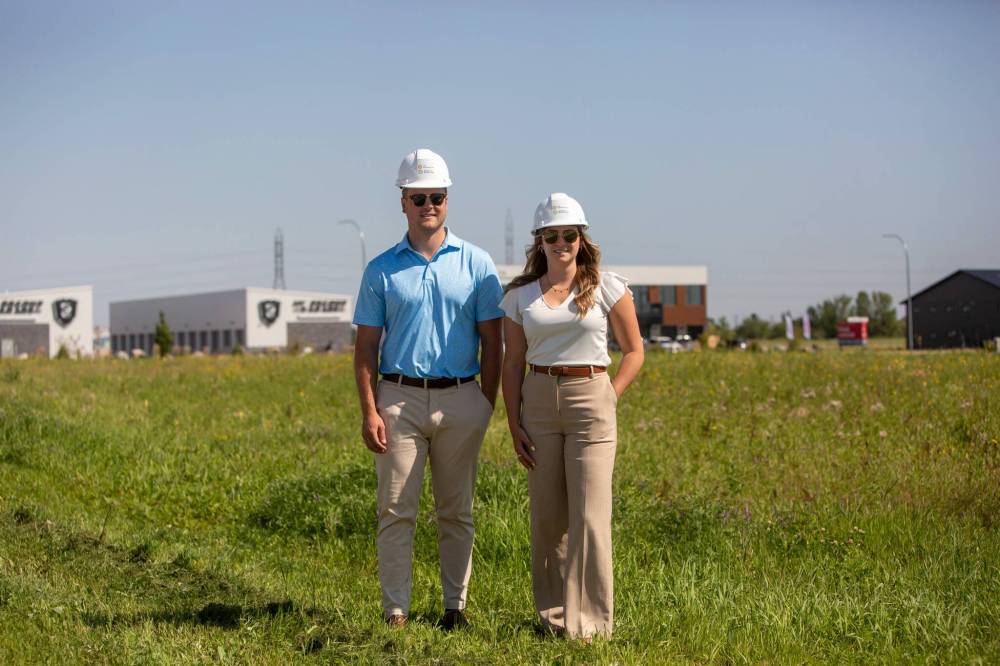
BROOK JONES / FREE PRESS
Stephen Kleysen (right), vice-president, and Shannon Kleysen, director of administration of T2K Enterprises. T2K has sold more than 24 acres of McGillivray Business Park.
T2K has sold more than 24 acres of McGillivray Business Park; at least another 44 acres have been developed. A medical centre and daycare are among the tenants. Both complement the residential growth, Kleysen said.
Oak Bluff’s population grew 13.4 per cent between 2016 and 2021, reaching 8,120 residents. Add in nearby mature neighbourhoods like Whyte Ridge and Linden Woods, which are just inside city limits — there’s plenty of demand, Kleysen said.
T2K Enterprises watched eagerly as South Landing Business Park grew across the road, starting around 2017. De Luca’s appeared, followed by the Rink Training Centre. Other businesses — a coffee roaster, fabric retailer, professional services — began calling South Landing home.
“You look for that one bigger customer to take a chunk,” Kleysen said. “Your first phase is always your riskiest.”
Development began at McGillivray Business Park a short time later.
Executives at Brandt Tractor noted the growth and fast-forwarded its own expansion plans.
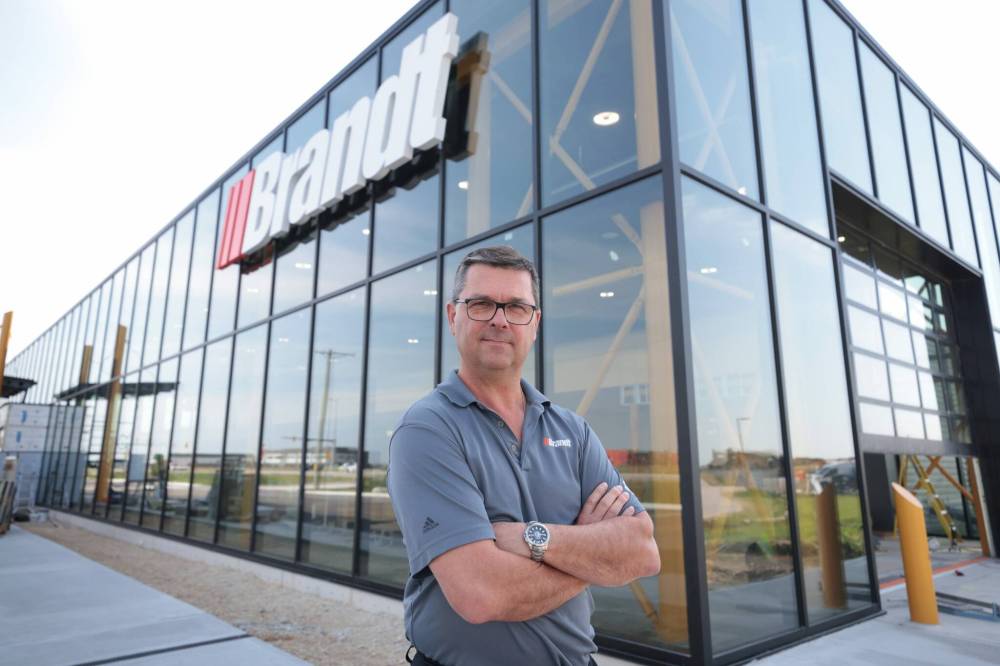
RUTH BONNEVILLE / FREE PRESS FILES
The community created between businesses is a plus, but increased traffic is tough, said Peter Paulic, Brandt Tractor’s branch manager.
“We didn’t want to get inched in, and it really started to explode here,” said Peter Paulic, the Oak Bluff/Winnipeg branch’s manager.
He estimates the site’s multi-million dollar expansion was advanced by five years. When it first opened in the early 2000s, it was 29,450-sq. ft. As construction finishes this fall, Brandt will span 65,190-sq. ft.
The showroom will double in size; the parts warehouse will triple.
Brandt made “significant investments” in the area because of its access to the city and highways. The community created between businesses is a plus, but increased traffic is tough, Paulic said. He’s hopeful for the proposed twinning of McGillivray Boulevard and the interchange where McGillivray intersects with the Perimeter Highway.
Detailed design work and construction on the $150-million interchange is scheduled to begin next year, a provincial spokesperson said.
“At the end of the day, if we’re going to become a city of a million-plus, these developments have to happen,” Paulic said. “It’s important for growing our tax base, and (for) the sales that happen with that.”
“At the end of the day, if we’re going to become a city of a million-plus, these developments have to happen.”–Peter Paulic
The road project includes an interim phase with a diamond interchange, where McGillivray Boulevard will be shifted southward from its current southwest route. The final phase encompasses two bridge overpasses.
“The interchange they’re going to build … is going to change the landscape of living in Oak Bluff,” said Ken Zacharias, vice-president of ICI Properties, who’s resided in the community for 16 years.
The firm is advertising light industrial lots along the Perimeter Highway leading to Wilkes Avenue.
Phase 1 entails 92 acres of farmland. Phase 2 will be more than double. Current lot prices range from $350,000 to $425,000 per acre.
“There’s a ton of demand and the amount of development hasn’t kept up,” Zacharias said, though interest rates and inflation have slowed construction.
“There’s a ton of demand and the amount of development hasn’t kept up.”–Ken Zacharias
Zacharias settled in Oak Bluff because of the larger residential property sizes and proximity to the city. He believes there’s “good opportunity” to create housing for seniors and first-time homebuyers.
“Oak Bluff is the star of the show at this moment, when we talk about the south Perimeter,” he said.
The coming decades — and the interchange — could bring development along the entire McGillivray Boulevard corridor and east along the Perimeter Highway to Brady Road, Zacharias said.
Jennifer Last has watched traffic increase on McGillivray from her perch at Roxy’s Restaurant and Lounge, just off the Perimeter Highway in Oak Bluff. At first, she was upset vehicles could be diverted from passing her 21-year-old eatery.
“But then I put it in perspective of (the) reality of life,” she said. “The expansion of the highway is part of growth — we can’t deny it.
“I really think that growth and development is incredibly good for the community.”
Regulars will still come, and more businesses nearby means new patrons, from Last’s perspective. The interchange will increase safety, she believes, having witnessed near-accidents as customers exit Roxy’s onto McGillivray.
Still, she aches for the farmland that’s being bulldozed.
“That kind of breaks my heart,” said Last, a local resident. “We’re losing the old-school culture.”
“We’re losing the old-school culture.”–Jennifer Last
The proposed interchange doesn’t sit right with some landowners along McGillivray. Several residents who asked to remain anonymous expressed anger and distress over having their land, and a business, expropriated.
“There’s not much you can do about it,” said Mark Anseeuw, who expects a “pretty significant” portion of his farmland to be expropriated. He’s lived in Oak Bluff for 63 years.
“I guess in the end, you just hope the process that you have to go through is … fair.”
He called the area’s recent business growth an “asset,” adding road improvement is needed.
The province’s land acquisition process remains ongoing, a spokesperson wrote in a statement.
Due to the growth, the RM of Macdonald is doubling its water plant capacity through a new expansion project. Reeve Brad Erb hopes the 18-month project begins in spring.
The expansion is expected to cost roughly $20 million, Erb said. The province announced up to $7.75 million for the project last year.
“It’s good for the entire capital region.”–Brad Erb
The RM’s latest development plan outlines a quarter section running north along the Perimeter, from Oak Bluff to Winnipeg’s edge, for enterprise growth. Land west of Oak Bluff’s current housing is reserved for future residential.
Erb credits Oak Bluff’s location just outside the city, its suite of services and the RM’s “nimbleness” as reasons for growth. Agricultural land is still a major contributor to the overall economy, he underscored.
The RM is tangled in several lawsuits with businesses who were damaged and destroyed by a fire that broke out in 2021. Buildings haven’t been rebuilt on site. Erb declined to comment on the situation.
Macdonald has a study underway reviewing its emergency services, to be completed by early winter, Erb said.
New business growth is beneficial “for our ratepayers from a financial perspective, but also from an employment perspective,” Erb said. “It’s good for the entire capital region.”
Rosser
Multi-million dollar deals in the RM of Rosser have become the norm, not the exception.
“Every time we have a meeting, there’s something about somebody new that’s going to be developing in CentrePort,” said Reeve Ken Mulligan, who suspects Rosser could double its assessment within the next 10 years and surpass $2 billion within the next five.
The trimodal port predates his time leading the community but Mulligan has seen its 665-acre rail park’s development, which connects businesses to Canadian Pacific Railway’s main line northwest of Winnipeg.
Highway Motor Freight Ltd., the rail park’s latest tenant, inked a $16-million deal for 20 acres. It follows Fastfrate Group, which spent $55 million on a 25-acre property.
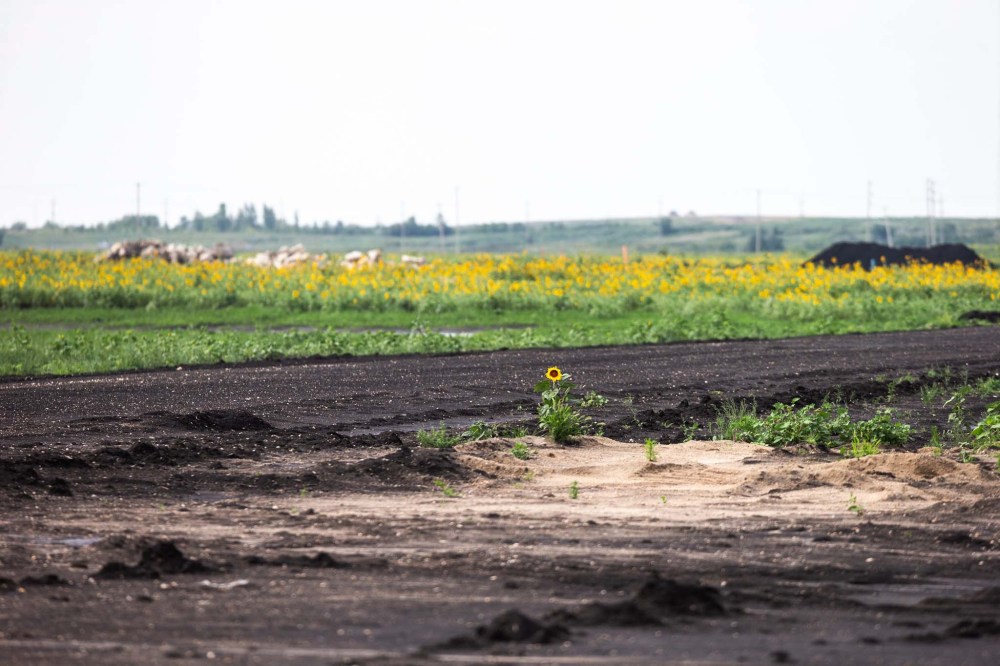
MIKAELA MACKENZIE / FREE PRESS FILES
Fastfrate Group spent $55 million on a 25-acre property in CentrePort
“It will never be quote-unquote done. Even once it’s full, I think there will always be an ever-changing landscape at CentrePort,” said Carly Edmundson, CentrePort Canada’s chief executive.
The entire development spans 20,000 acres, or the size of Manhattan, Edmundson said. About 60 per cent sprawls through Rosser, with the remainder within city limits.
Because of the growth, the RM plans to open a second office for staff — it has beefed up its public works department — and a new fire hall within five years.
Water servicing could become a “struggle,” Mulligan said. The government is searching for additional options; it currently draws from Cartier and Headingley municipalities.
Rosser’s residential population hovers around 1,250 people, many of whom are farmers. Outside the Perimeter, there’s no desire yet to covert farmland to commercial, said Mulligan, also a farmer.
“Our RM has always been an agriculture-related RM, and … it’s going to stay that way, I think, for some time,” he said. “Our agriculture takes care of itself quite well.”
Eventually, housing developments may pop up around Grosse Isle and the community of Rosser, but water and sewage infrastructure first needs to be confirmed, Mulligan said.
He estimates CentrePort could grow another 50 to 75 per cent in the municipality over the next five years.
“I think for the province of Manitoba, we can make this whole area very successful,” Mulligan said, adding the municipality works well with Winnipeg, Oak Bluff and Headingley.
Headingley
Headingley’s population has been growing annually at about a rate of four to five per cent, just as anticipated. According to Canada’s 2021 census, 4,331 people live in the municipality, up from 3,579 in 2016.
“We feel it helps the community sort of stay within its means, in terms of use of services,” said Headingley Mayor Jim Robson, adding community leaders have had a vision since the region separated from Winnipeg in 1992.
“(We’re) not trying to be all things to all people,” Robson said. “We look at our vision, and we make sure that … developments that come along comply with that vision.”
There seems to be continued demand for the lifestyle Headingley offers; it tries to keep a small town, “semi-rural feeling,” Robson said.
Over the last five years, there have been 219 housing starts and a roughly 23 per cent growth in the municipality’s commercial assessment. Headingley has three main business parks ranging from 40 to 60 per cent completion.
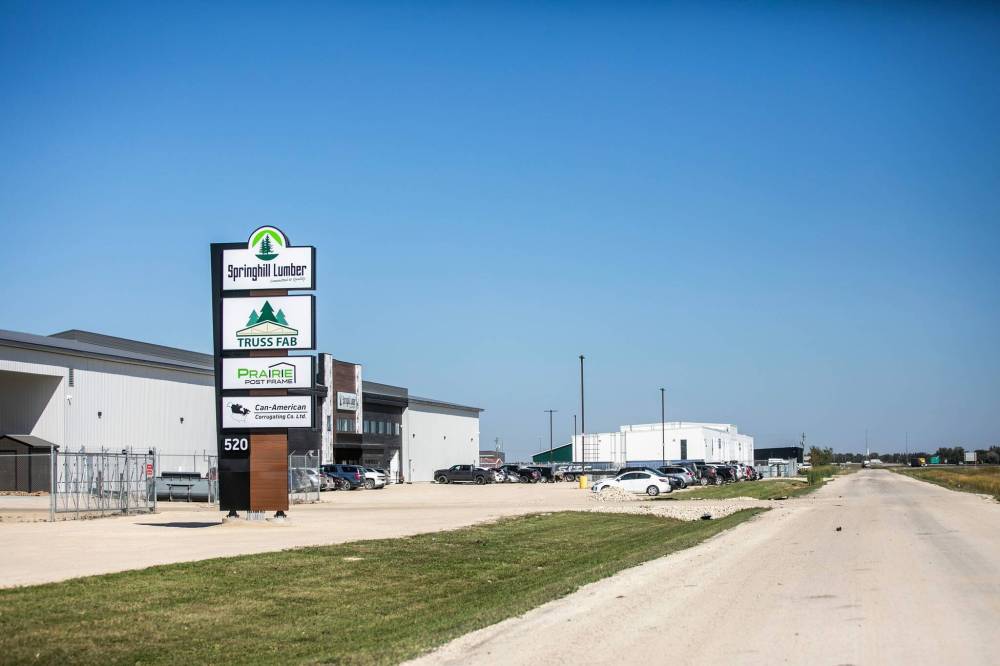
MIKAELA MACKENZIE / FREE PRESS
Over the last five years, there have been 219 housing starts and a roughly 23 per cent growth in Headingley’s commercial assessment. There are three main business parks ranging from 40 to 60 per cent completion.
“We just felt that this side of the city is the side that’s going to expand the most in the next 20 years,” said Don Henzel, general manager of Springhill Lumber.
The company occupies the former Adrenaline Adventures space, joining a cluster of new buildings along the Perimeter Highway. The growing company left a five-acre lot in the city for nearly 66 acres in Headingley.
“Headingley offered us the room,” Henzel said.
The municipality’s suite of services and relatively low mill rate are likely business magnets, Robson said. While its current wastewater treatment plant still has capacity, Headingley is looking to build a new water reservoir in its southeast corner, to accommodate growth. The province announced up to $4 million for the project last year.
gabrielle.piche@winnipegfreepress.com

Gabrielle Piché
Reporter
Gabrielle Piché reports on business for the Free Press. She interned at the Free Press and worked for its sister outlet, Canstar Community News, before entering the business beat in 2021. Read more about Gabrielle.
Every piece of reporting Gabrielle produces is reviewed by an editing team before it is posted online or published in print — part of the Free Press‘s tradition, since 1872, of producing reliable independent journalism. Read more about Free Press’s history and mandate, and learn how our newsroom operates.
Our newsroom depends on a growing audience of readers to power our journalism. If you are not a paid reader, please consider becoming a subscriber.
Our newsroom depends on its audience of readers to power our journalism. Thank you for your support.